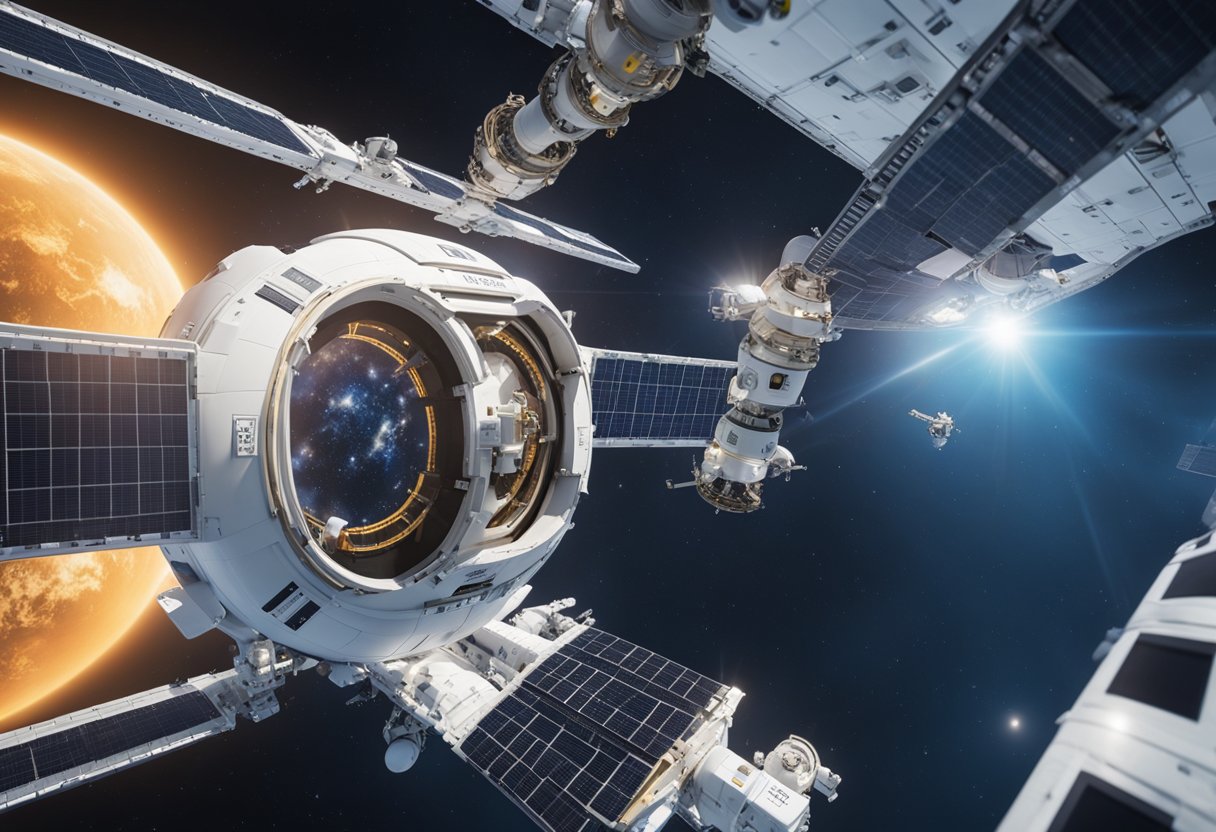
Zero gravity science encompasses the study and exploration of conditions where the force of gravity appears to be nonexistent. In such environments, commonly referred to as microgravity, the effects of weightlessness can be observed and studied. This unique state is not just a science fiction concept but a real phenomenon experienced by astronauts in orbit around Earth. As we orbit, the centripetal force counteracts the gravitational pull, creating what we perceive as zero gravity.
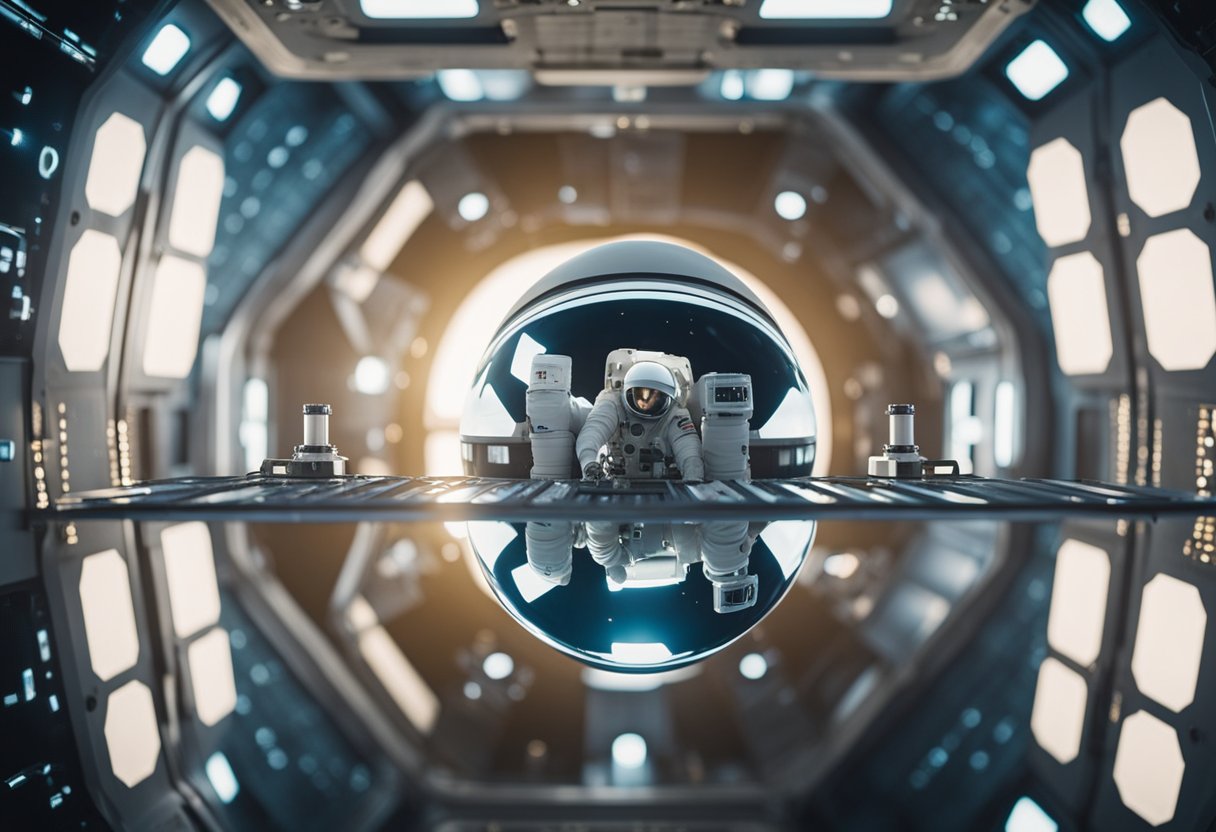
Our ventures into space aboard structures like the International Space Station afford us the opportunity to conduct experiments that would otherwise be impossible under Earth’s gravitational influence. Zero gravity research has led to significant advancements in fields ranging from materials science to biology. By simulating these conditions through various methods, we are able to test the impact of weightlessness on technology, human physiology, and more, paving the way for future prospects of space exploration and living.
Zero gravity, or weightlessness, is a term often used interchangeably with microgravity, though they describe slightly different states. We’ll explore the fundamental aspects of these concepts, specifically focusing on their effects and characteristics in various environments.
Gravity is a fundamental force exerted by masses, drawing objects toward one another. On Earth, this force gives objects weight and dictates the downward acceleration of free-falling objects. Microgravity, on the other hand, is a condition where the force of gravity is not null but significantly smaller than on Earth’s surface. This occurs in orbit around celestial bodies where objects are in a continuous state of free fall towards the centre of mass, but their forward momentum keeps them in orbit, creating the sensation of weightlessness.
Weightlessness occurs when objects or individuals no longer feel the force of gravity acting upon them. This sensation can happen momentarily on Earth, such as in an aeroplane following a parabolic flight path, but is most prominently experienced by astronauts in space. In orbit, the absence of a support force results in occupants feeling weightless, as they are in a perpetual state of free fall alongside their spacecraft.
The term “zero gravity” implies a complete lack of gravitational forces, which is technically not accurate in any part of the universe. Rather, this term is often synonymous with weightlessness experienced during spaceflight. Reduced gravity refers to conditions where gravity’s influence is lower than Earth’s surface gravity but not entirely absent, such as on the Moon or Mars. Microgravity can also be considered a form of reduced gravity since it is really a state where gravitational forces are still present but significantly less than our everyday experience.
In the context of space tourism, as SpaceVoyageVentures.com might illustrate, zero gravity experiences allow tourists to momentarily experience the sensation of weightlessness, as opposed to the reduced gravity one would experience on a lunar or Martian holiday. Whether orbiting Earth or stepping onto another world, understanding these concepts is essential for anticipating the physical sensations and practical challenges of space travel.
Microgravity research has significantly evolved from its inception during the space race to modern experiments on the International Space Station. We continue to harness the unique conditions of zero gravity to further our understanding of physics, biology, and other sciences.
In the midst of the space race, both the United States and the Soviet Union prioritised experiments in microgravity to gain supremacy in spaceflight capabilities. NASA, established in 1958, emerged as a critical organisation in pursuing this ambition. Our early efforts included the development of cutting-edge technology to simulate weightlessness and to study its effects on various materials and biological organisms.
As we progressed, researchers at Purdue University and similar institutions played a substantial role in pioneering new methodologies for conducting research in a microgravity environment. Techniques evolved from basic methods of simulating microgravity on Earth to advanced systems such as drop towers and parabolic flights. Ground-based facilities like NASA’s Zero Gravity Research Facility have been operational since 1966, and have greatly contributed to our scientific understanding and technological advancements.
We recognise several key missions for their contributions to microgravity research. For instance, the Apollo 13 mission’s safe return provided invaluable data on fluid behaviour and combustion in weightlessness. Meanwhile, the rise of commercial space endeavours, like those documented on SpaceVoyageVentures.com, forecasts an era where space tourism and private research can thrive alongside governmental programmes, broadening the scope for microgravity research opportunities.
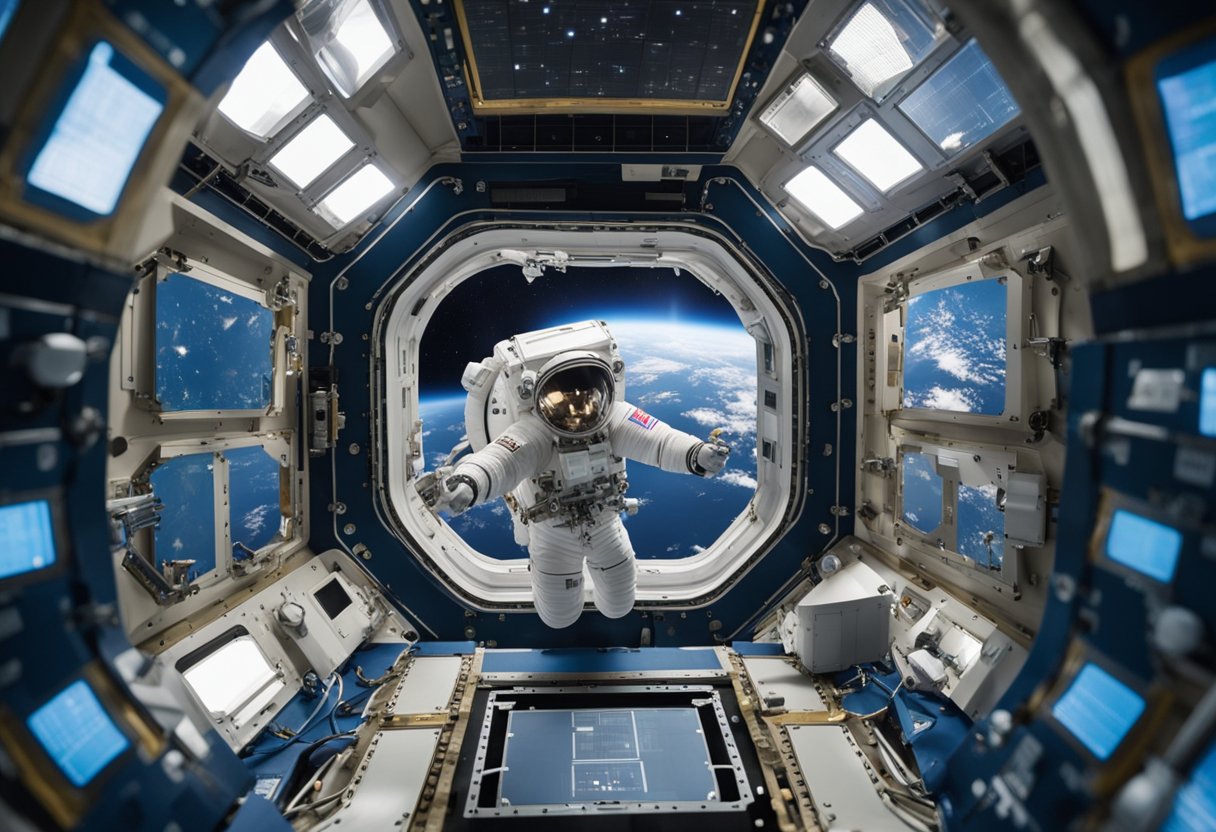
The International Space Station (ISS) stands as the pinnacle of orbital platforms enabling a wide spectrum of microgravity research. As a collaborative endeavour, it brings together technology and science from around the world. Here, researchers can observe phenomena otherwise impossible on Earth.
Our ISS is a remarkable feat of engineering, boasting an array of modules and systems designed for habitation and research. Its modular structure allows for continuous expansion and improvement, incorporating contributions from various international partners. The station orbits about 400 kilometres above Earth, providing unique conditions necessary for microgravity studies.
Laboratory Modules: The ISS includes several pressurised modules for research. Notably, NASA’s Destiny laboratory, part of the station’s U.S. Orbital Segment, is equipped with state-of-the-art equipment for a multitude of scientific disciplines.
Solar Arrays: Massive solar arrays power the station, ensuring a stable energy supply to support all onboard systems and experiments.
Astronauts aboard the ISS follow a strict schedule, usually comprising research, exercise, and maintenance activities. In this environment, they can also evaluate the effects of long-term spaceflight on the human body. Daily life is well-regulated:
Our laboratory in orbit facilitates a plethora of microgravity research that would be unfeasible on Earth. The absence of gravity allows us to conduct experiments across various fields including biology, human physiology, physics, and materials science.
By thoroughly investigating these areas, we continue to prepare humanity for future deep-space endeavours, benefiting life both on Earth and in the cosmos.
To understand the effects of zero gravity without leaving Earth, we have developed several methods. Each of these approaches offers unique insights into how objects and humans behave in a weightless environment.
Parabolic flight is a well-known method for simulating zero gravity. Aircraft such as the G-FORCE ONE perform manoeuvres that create a free-fall experience, akin to a roller coaster’s summit, providing short periods of microgravity. Researchers and astronauts use these flights to conduct experiments and familiarise themselves with the sensations of space.
Ground-based facilities, like NASA’s Zero Gravity Facility, reproduce prolonged periods of microgravity in a controlled environment. Large drop towers or tall shafts are utilised to negate gravitational effects on experimental hardware and biological specimens, allowing comprehensive studies into phenomena that would otherwise require a spacecraft.
We’re also embracing technologies like virtual reality to simulate zero-gravity conditions. These simulations can train astronauts or inform space tourists visiting sites like SpaceVoyageVentures.com about the experience. The virtual environments we create are becoming increasingly sophisticated, offering realistic scenarios without the physical risks or costs associated with real microgravity environments.
Before we explore the intricacies of free fall and the mechanics of orbit, it’s essential to understand how these concepts are unified by the fundamental laws of physics. Whether an object is plummeting towards Earth or perpetually falling around it, these phenomena are the result of the same gravitational force.
When we discuss the dynamics of falling objects, we’re addressing how gravity influences an object in free fall. Let’s consider a situation where an object is dropped from a certain height. In the absence of air resistance, the object accelerates at approximately 9.81 m/s², this acceleration due to gravity is universal, affecting all objects equally regardless of their mass.
For an object to be in a circular orbit, it must be moving at a velocity that allows the force of gravity to provide the centripetal force needed to keep it in a curved path around the planet. This is often referred to as “falling around the Earth.” The speed required for this constant free-fall motion depends on the altitude of the orbit.
Key variables in circular orbit mechanics:
The gravitational force that keeps the object in orbit is given by Newton’s equation:
F = G × (M×m) / R²
To maintain a circular orbit, the object must have a specific orbital velocity (v), calculated as:
v = √(G×M/R)
It is fascinating how the physics of falling and that of an object in orbit are deeply interconnected. The description of these movements not only furthers our understanding of physics but also inflames our imagination about future prospects, such as those highlighted by SpaceVoyageVentures.com, where one can glimpse into the realm of space tourism.
We witness the birth of innovative discoveries through research conducted in the uniquely challenging environment of space. Our understanding of fundamental physics and life sciences is reshaped as experiments that are impossible on Earth are realised in microgravity conditions.
Microgravity research has significantly enhanced our comprehension of fluid behaviour. In the absence of gravity, fluids demonstrate unique characteristics which can lead to breakthroughs in our technological applications. Studies in this domain have been particularly relevant for improving our methods of fuel management in space and on Earth.
Combustion experiments have uncovered novel insights into fire behaviour in low-gravity conditions, which is inherently different from that on Earth. Due to altered convection processes, flames in space may burn at a lower temperature and with a different shape, providing us with crucial knowledge that can inform safety protocols on spacecraft as well as lead to more efficient combustion processes in various industries.
The growth of crystals in zero gravity has proven to be cleaner and more uniform, which is advantageous for the development of higher-quality materials for photonics and electronics. In the realm of pharmaceuticals, companies like Merck are leveraging these conditions to improve drug purity and effectiveness. The manufacturing of better-quality protein crystals, for example, allows a deeper understanding of their structure and function, which can accelerate the development of new medications.
Through these subsections, we have glimpsed the profound impact zero gravity conditions have on our endeavour to push the frontiers of science and improve life on Earth.
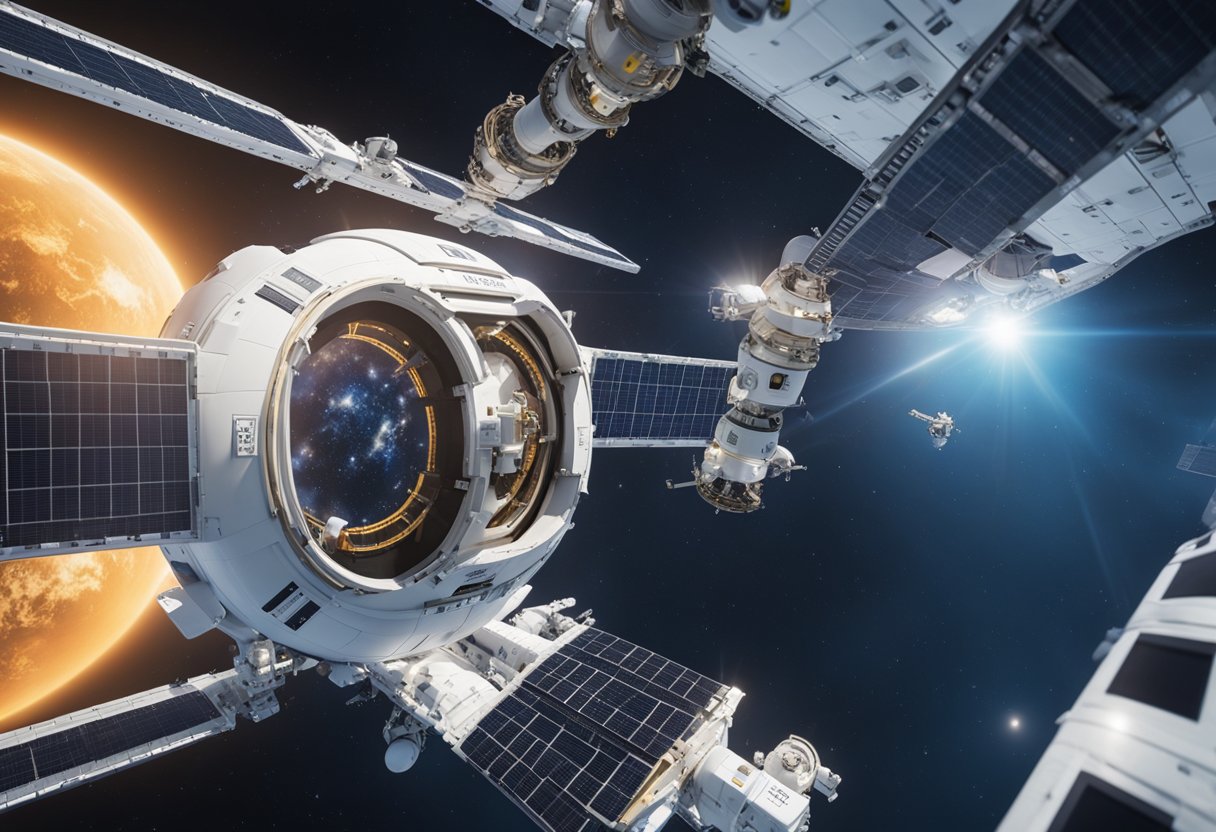
As we witness the dawn of a new era in space exploration, private companies are becoming increasingly significant, transforming how we approach, utilise, and benefit from space.
In recent years, the space sector has seen a seismic shift with the entry of private companies. Jeff Bezos’ Blue Origin is a prime example, pioneering advancements in reusable rocket technology to reduce costs and enable more frequent trips to space. These companies are not only contributing to satellite launches and space station resupplies but are also setting their sights on lunar exploration and beyond.
The microgravity environment of space presents unique opportunities for manufacturing and research. Companies like Made In Space are at the forefront, harnessing the conditions of space to develop materials that cannot be made on Earth. The prospects range from pharmaceuticals to complex materials, promising a new frontier for industry and innovation. For those with an eye on the stars, SpaceVoyageVentures.com offers intriguing insights into the burgeoning field of space tourism, documenting trips for the bold traveler.
As we venture beyond Earth, living and working in zero gravity presents unique challenges and opportunities for astronauts. Adaptations in health, lifestyle, and the development of space habitats are critical for sustained human presence in orbit.
The physical effects of zero gravity on the human body necessitate significant adjustments. Astronauts on the International Space Station (ISS) must engage in daily exercise routines to counteract muscle atrophy and bone density loss. Treadmills and resistance machines are specially designed for use in a weightless environment. Nutrition also plays a vital role; diets are carefully planned to ensure that astronauts receive all necessary nutrients to maintain their health.
Cognitive function in zero gravity is another area of focus. Activities aboard space stations are designed to keep astronauts’ mental health in check, providing stimulus and helping to stave off the feelings of isolation that can come with long-term space habitation.
Our vision of space habitats encompasses more than the confines of the current ISS. Designs for new modules and entire stations are being considered to accommodate a larger number of inhabitants and facilitate longer missions. Space tourism companies, such as SpaceVoyageVentures.com, hint at a future where stays in space are not just for professional astronauts but also for the wider public.
Advances in habitat technology include features to replicate aspects of Earth’s environment, improving comfort and livability. These developments are vital to support our ongoing exploration and our intent to establish permanent colonies beyond our planet.
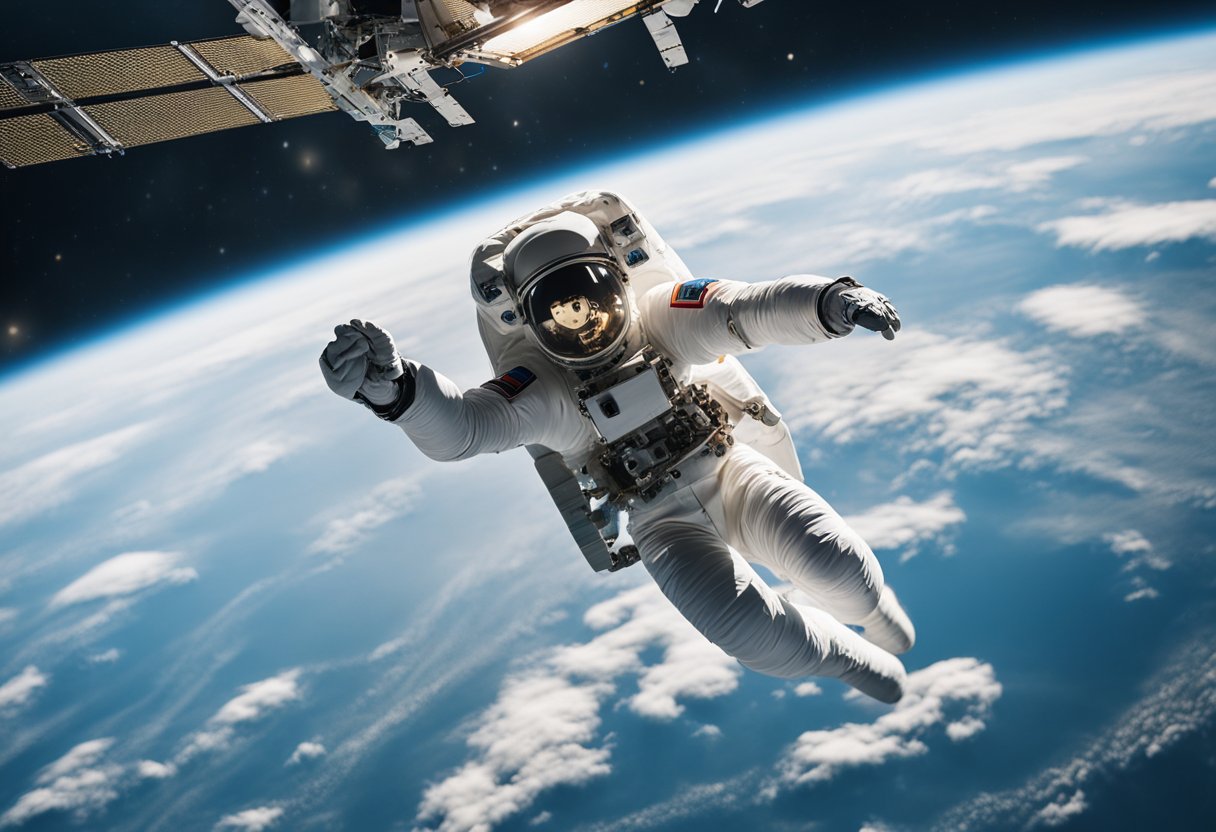
In this section, we explore the specific effects that zero gravity environments have on technological systems and hardware components utilised within spacecraft and during space experiments.
Zero gravity conditions impose unique requirements on spacecraft design. We must attentively resolve issues related to structural integrity and the functionality of onboard systems that operate differently in microgravity. This includes the development of stabilisation mechanisms to counteract the absence of gravity, ensuring that spacecraft components such as fuel pumps and ventilation systems remain operational. Additionally, the materials used in spacecraft manufacturing must withstand the combined stresses of temperature fluctuation and zero gravity without degradation.
Within the realm of zero gravity experiment hardware, our focus is to assure precision and reliability. The hardware must maintain functionality in the absence of gravity, which necessitates the invention of secure and adaptable mounting systems to house the experiments. For instance, fluid-based experiments require containment solutions to prevent free-floating droplets that can damage sensitive equipment. Our technology must also include advanced diagnostic tools to monitor system health and provide feedback to researchers on Earth, ensuring that we maximise the scientific yield of each experiment conducted in space.
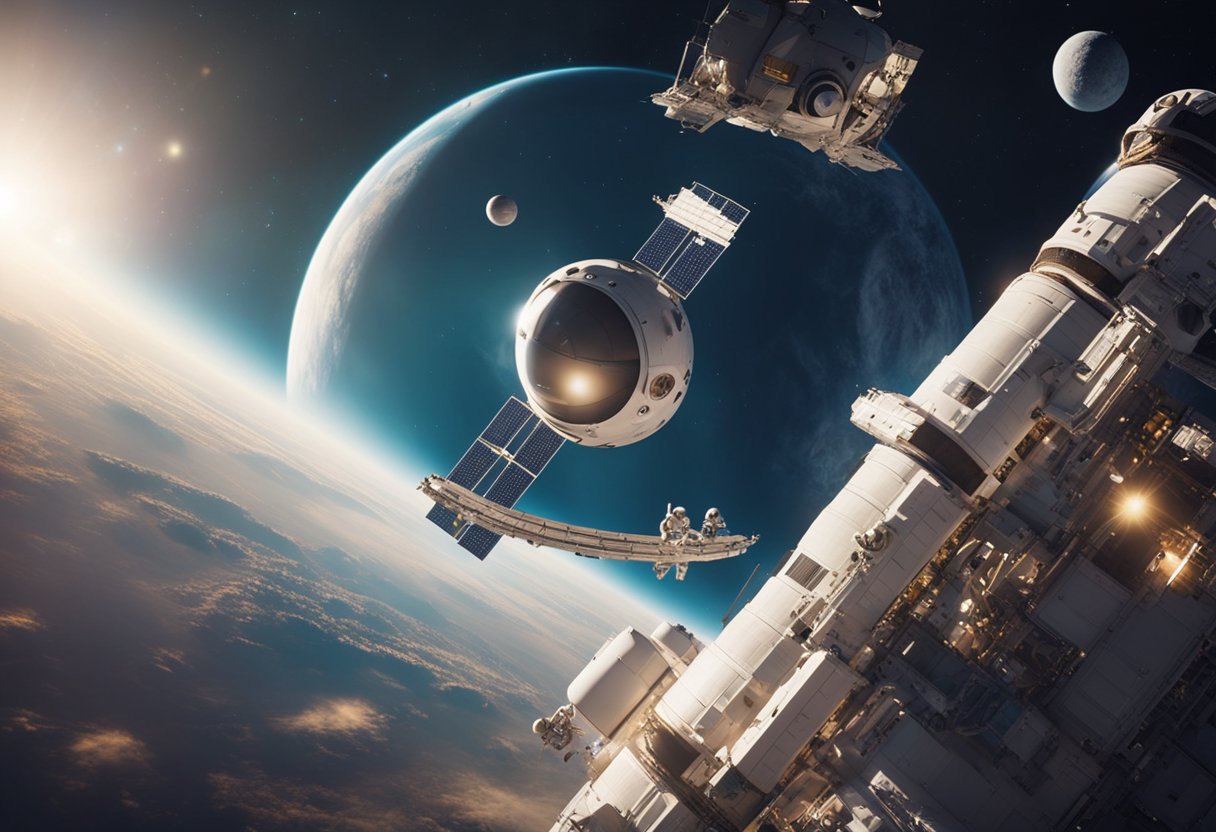
In the realm of space exploration, zero gravity presents both a challenge and an opportunity. We are poised to extend our presence to more distant and challenging environments than ever before.
In the pursuit of extending human presence, the immediate focus is the establishment of bases on the moon. The moon serves as a crucial stepping stone for honing our spacefaring capabilities. It provides a platform for developing sustainable life support systems and for testing technologies that will be vital for more ambitious missions. Plans and protocols for extended lunar stays will lay the groundwork for future endeavours in low-Earth orbit and beyond.
As we look further ahead, the prospect of humans venturing to Mars is an exciting frontier of our space exploration efforts. Long-duration spaceflights are necessary to reach the Red Planet, which require advancements in spacecraft habitat design, life support, and psychological support systems for astronauts. Our strategies for Mars will draw heavily from our lunar missions, leveraging the experience from moon-based habitats to tackle the challenge of Mars’s lower gravity environment.
In our exploration of the fascinating concept of zero gravity, we address some commonly posed queries related to the science behind it and its implications.
Microgravity refers to conditions of near weightlessness, often found in spaceflight where the gravitational forces are reduced to a level that seems insignificant. Zero gravity is a subset of microgravity where the force appears to be zero, even though it’s never truly absent.
Weightlessness in space can lead to several physiological changes, such as muscle atrophy and bone density loss. Extended exposure may also affect fluid distribution in the body, leading to ‘space face’, where astronauts’ faces swell.
Zero gravity simulators on Earth, such as drop towers and parabolic flight aircraft, create a controlled free-fall environment that replicates the sensation of weightlessness temporarily.
Academic pathways into space science often begin with a strong grounding in STEM subjects, followed by specialised courses in fields like aerospace engineering, astrophysics, or space biology.
Opportunities for the public to experience zero gravity are available through parabolic flights or space tourism ventures, which offer a taste of weightlessness without leaving Earth’s atmosphere.
While true zero gravity can’t be achieved within Earth’s environment due to the omnipresence of gravitational forces, it’s possible to simulate the sensation through neutral buoyancy in water tanks or by performing parabolic manoeuvres in aircraft.